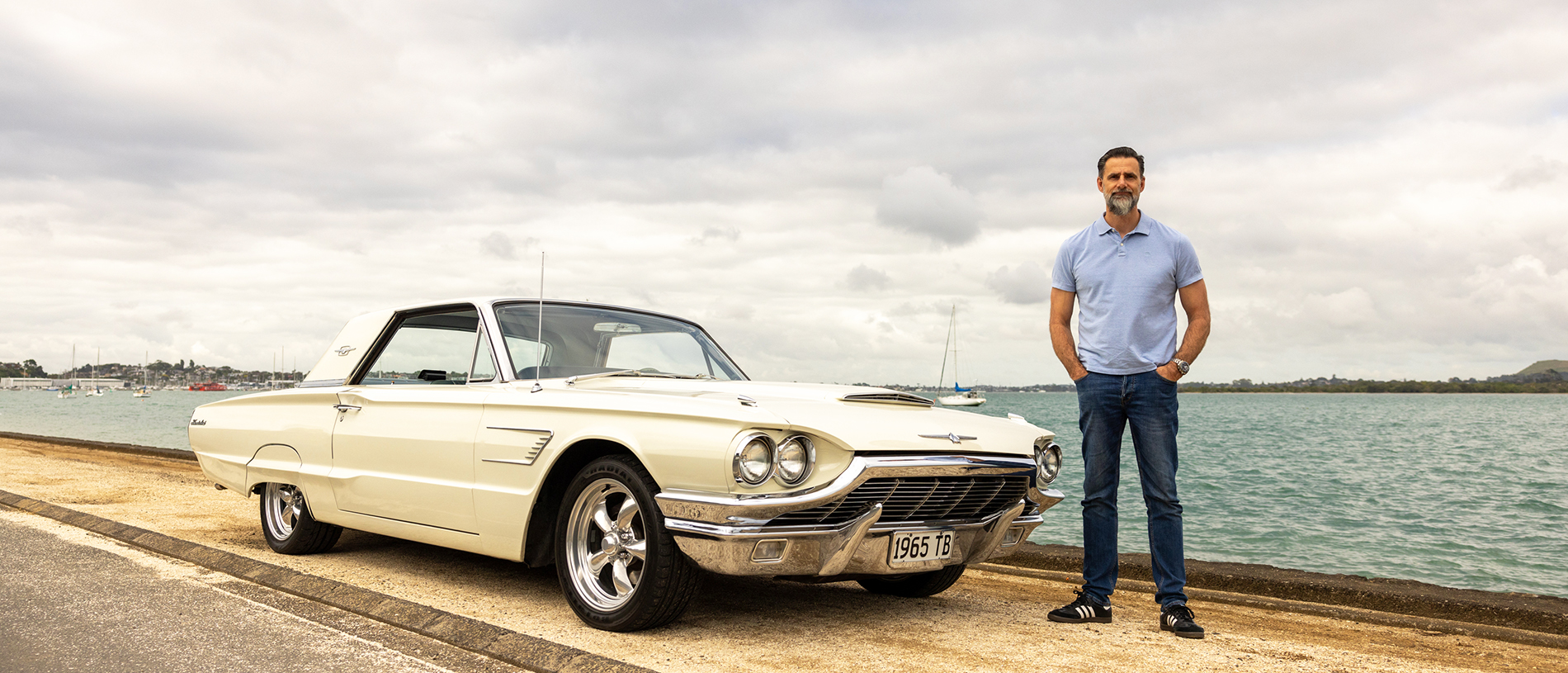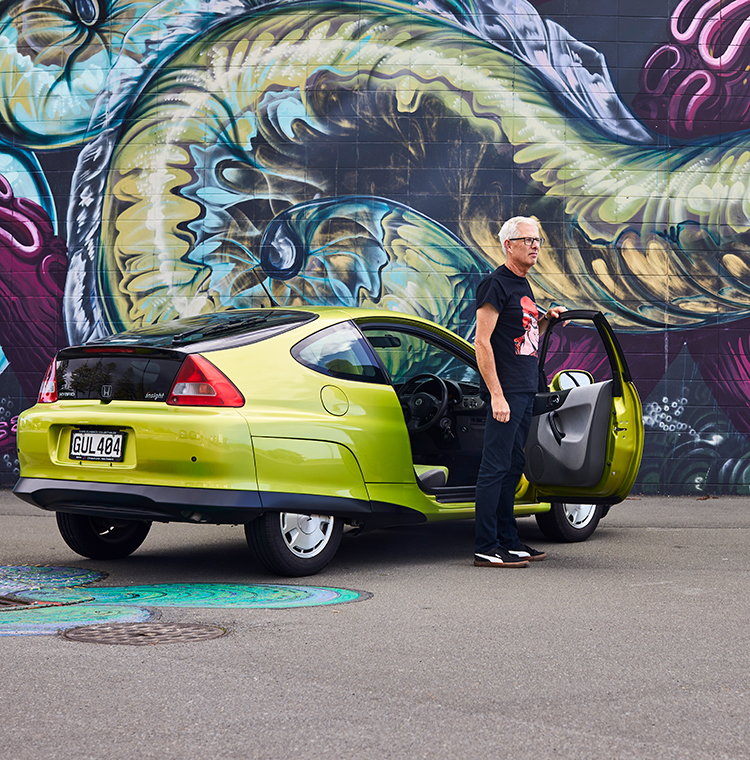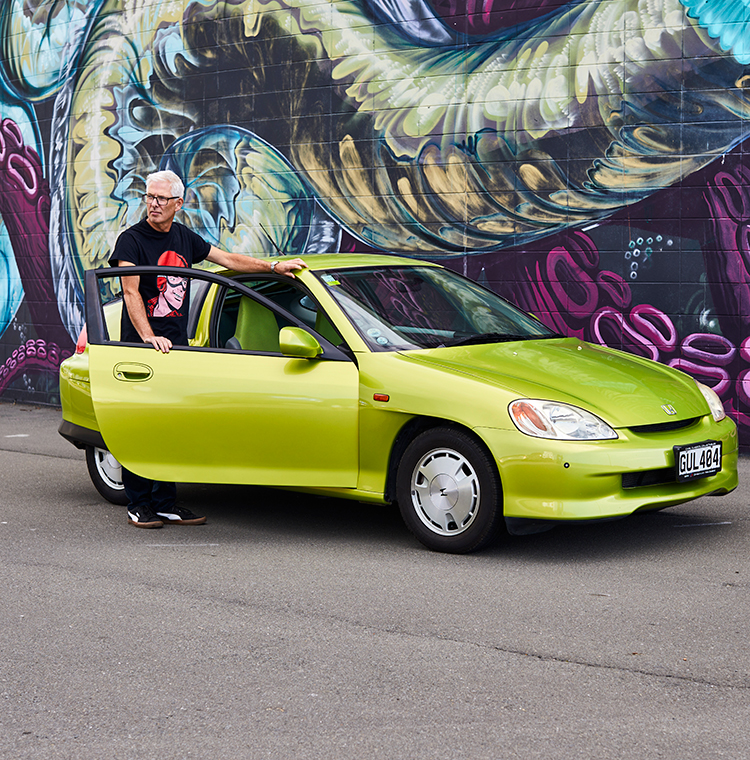
Wheel Love: a 1965 Ford Thunderbird
Avon Bailey shares what he loves about his pristine 1965 Thunderbird.

Andrew Gladstone shares what he loves about his unusual 2000 Honda Insight, one of the first hybrid vehicles ever made.
“I’ve been around cars for most of my working life, so the Insight was a model I was aware of. It’s an unusual car. When I saw this one for sale on Trademe about three years ago I had to have it.
What really appealed to me was that the car is a fascinating piece of engineering. It was Honda’s attempt to create the most fuel-efficient car in the world at the time, and was the first hybrid vehicle you could buy outside of Japan.

When it came out in 2000, it had the lowest drag coeficient of any car in production. This is why it has the teardrop shape, being narrower at the back than it is at the front.
It was really designed as form following function. Honda wanted to see how fuel efficient they could make it. Even today it is still is very fuel efficient – it just sips at petrol. I’m getting 20.7km per litre.
The Insight is also made entirely of aluminium and other lightweight composites, so it only weighs 850kg. If it gets windy you can certainly feel it! And you sit really low, so it’s quite sporty.
Mine is missing a few things – it’s supposed to have a big sheet of aluminium underneath which is not there; you have to take that off to change the oil and obviously a previous owner got sick of it.
Honda made the Insight for seven years, but they only ever produced 17,000 of them.
It’s the time of year when batteries are under added pressure, with frosty mornings and cold, wet weather taking a toll.
This month, AA Members in areas with AA Roadservice and Battery Service vehicles * can arrange a free battery test. Using one of your Membership callouts, you can request for a visit from the AA to check the health of your vehicle’s battery. The test only takes a few minutes and if it turns out that you need a new battery, you will not only receive the AA Member discount, you'll also go in the draw to win a Gold Service voucher for an AA Auto Centre.
Taking the initiative to have your battery checked, free of charge, can help make your winter go more smoothly and leaves you with one less thing to worry about!
Call 0800 500 222 and request a ‘Winter Battery Check’.
*Battery checks are available in Whangārei, Auckland, Hamilton, Rotorua, Tauranga, Whanganui, Palmerston North, New Plymouth, Hastings, Napier, Wellington, Christchurch and Dunedin.
I think a lot of people would consider it to be a bit of a failure, but I think it was Honda’s way of proving a concept. They went on to release the second generation Insight, which was boring and looks more like a Prius, so they obviously learnt their lesson.
The split window harks back to the Honda CRX, so it’s a bit of Honda signature. The Insight could be seen as a spiritual successor, just maybe not as sporty.
I’d say that the one car that it most resembles is the Citroën SM from the very early 70s, which is also narrower at the back than the front. It has quite a few similar design cues. It’s hard to know whether Honda were paying homage to the Citroën, or if Citroën were going for the same sort of slippery design.
People do stop and photograph it and look at the registration sticker to see what it is, because I guess you don’t see these cars every day. And often people are surprised by how old it is – it’s older than it looks.

There is a little cubby hole at the rear, but there’s not much room for luggage because the back has the big hybrid battery system in it, which weighs 35kg on its own.
They will also do massive mileage – mine has done just under 170,000 kilometres – but there are plenty that have done over 500,000. They’re quite durable.
I do use the car a lot, but it’s not ideal if you need to transport anything, so I also have another car which has four doors and proper seating. If you don’t have to carry much then it’s really good.
It’s interesting and it’s cheap to run, but it’s not practical.”
This story is from the Winter 2025 issue of AA Directions magazine.
Do you have a vehicle that could be a contender for Wheel Love?
From vintage rides to unique motorbikes, EVs and dream cars, send us an email with your Wheel Love car story and you might be featured in a future issue of AA Directions magazine!